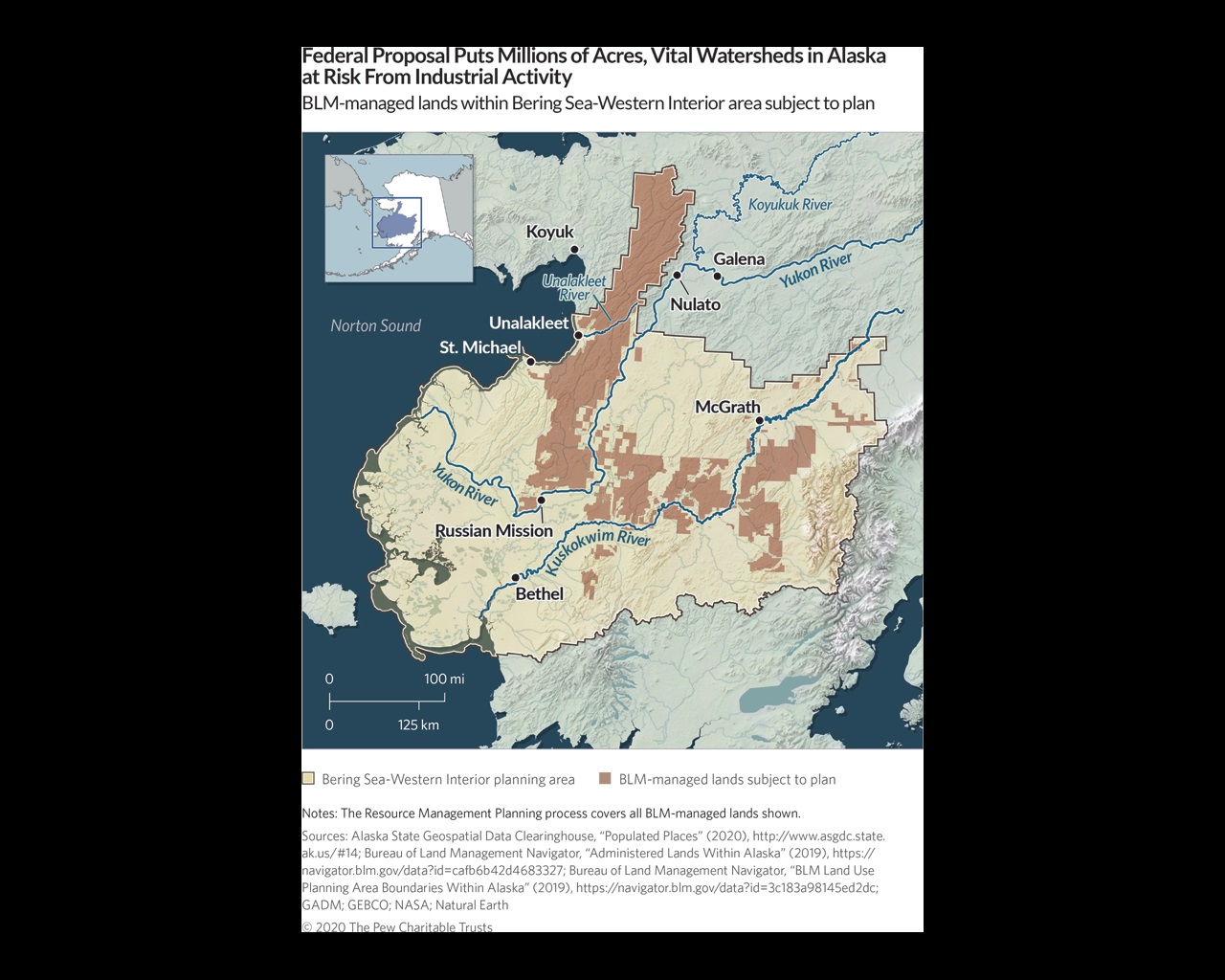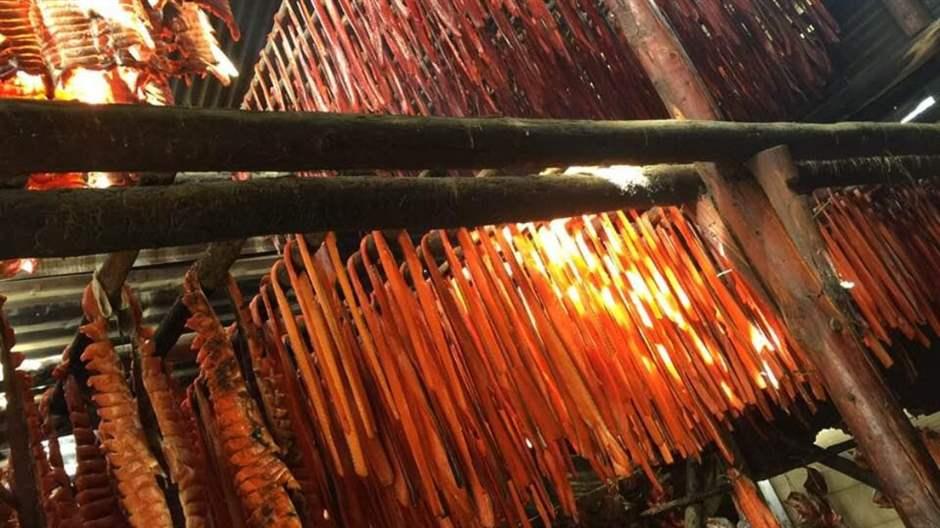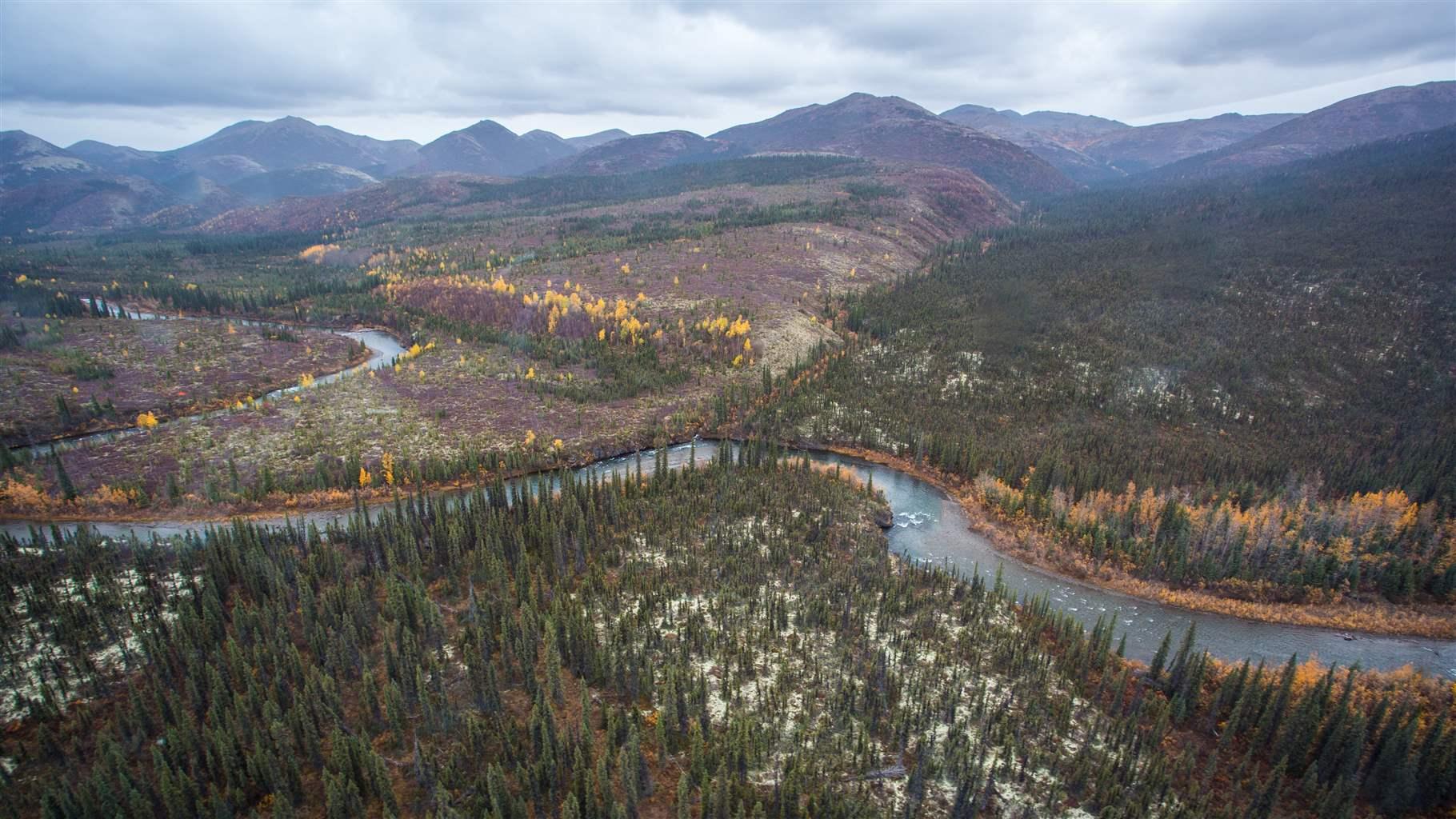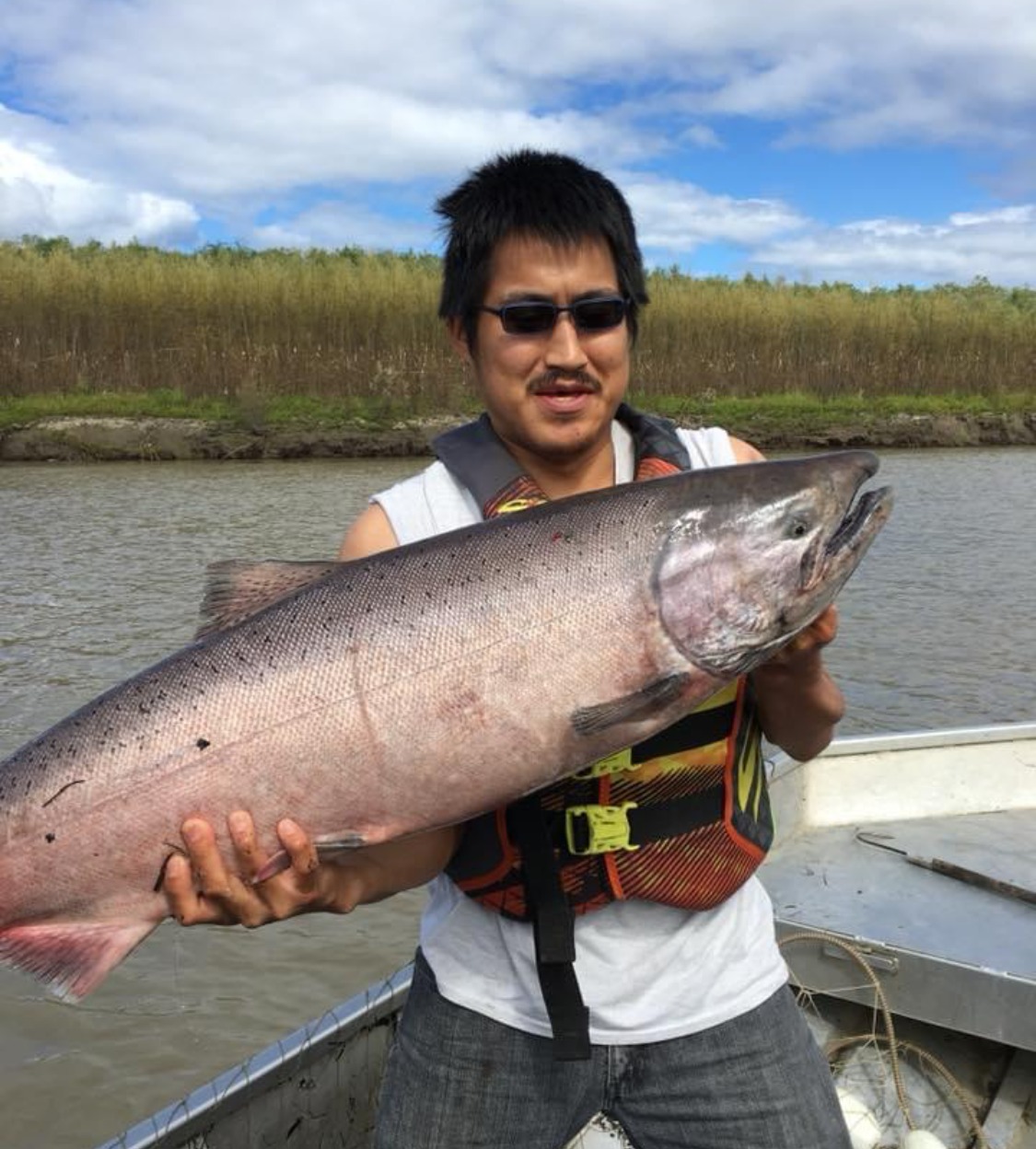BLM draft plan rejects tribes’ nominations for protection of critical watersheds
This issue brief is part of a series outlining public lands in Alaska that are in danger of losing protection.
Overview
Since 2016, the U. S. Bureau of Land Management (BLM) and the U. S. Forest Service have advanced five efforts that would dramatically alter protections for some 60 million acres of federally managed land in Alaska. If fully enacted, the policies and decisions outlined in those proposed and finalized plans would open vast stretches of the Bering Sea-Western Interior, Tongass National Forest, Central Yukon, National Petroleum Reserve-Alaska, and unencumbered BLM land to extractive development and have significant impacts on Alaska’s lands, rivers, wildlife, and the Indigenous peoples who call these landscapes home.1
Pristine watersheds threatened
The Bering Sea-Western Interior planning region is home to over 65 Indigenous communities whose traditional ways of life, supported by abundant fish, wildlife, and plants, have nurtured countless generations.2 The vast area includes most of the Yukon River, Kuskokwim River, and Unalakleet River watersheds, as well as other critical ecosystems that federally recognized tribes in Alaska have stewarded for thousands of years. Future uses of 13.5 million acres will be decided in the BLM’s planning process.
The region’s sovereign tribes have asked the BLM to protect watersheds important to local communities, but the bureau’s preferred plan would open 99% of the 13.5 million acres to extractive development.3 (See Figure 1.) BLM’s own reports have said some watersheds are “rare and irreplaceable” and support “an internationally significant fisheries resource,” with fish that travel more than 2,000 miles along the Yukon River to Canada and provide food for thousands of people along the way.4
The Bering Sea and Interior Tribal Commission, comprising more than two dozen tribes from the region, opposes the proposed plan and has asked BLM’s Alaska director’s office for better balance between extraction and conservation, and for watersheds nominated by tribes to be designated as areas of critical environmental concern. BLM has rejected the tribes’ appeals.5

The BLM is required by law to balance the many uses—including development and conservation—of the public lands it manages, but opening virtually all of the Bering Sea-Western Interior to potential extraction industry activity conflicts with that mandate. If the final plan mirrors the draft plan, it will put at risk essential watersheds that sovereign tribes rely on and that have historical, cultural, and economic significance.

Western Alaska families use smokehouses—like this one that belongs to Arnold Demoski’s family—to preserve the salmon harvest.
Rosa Peter


